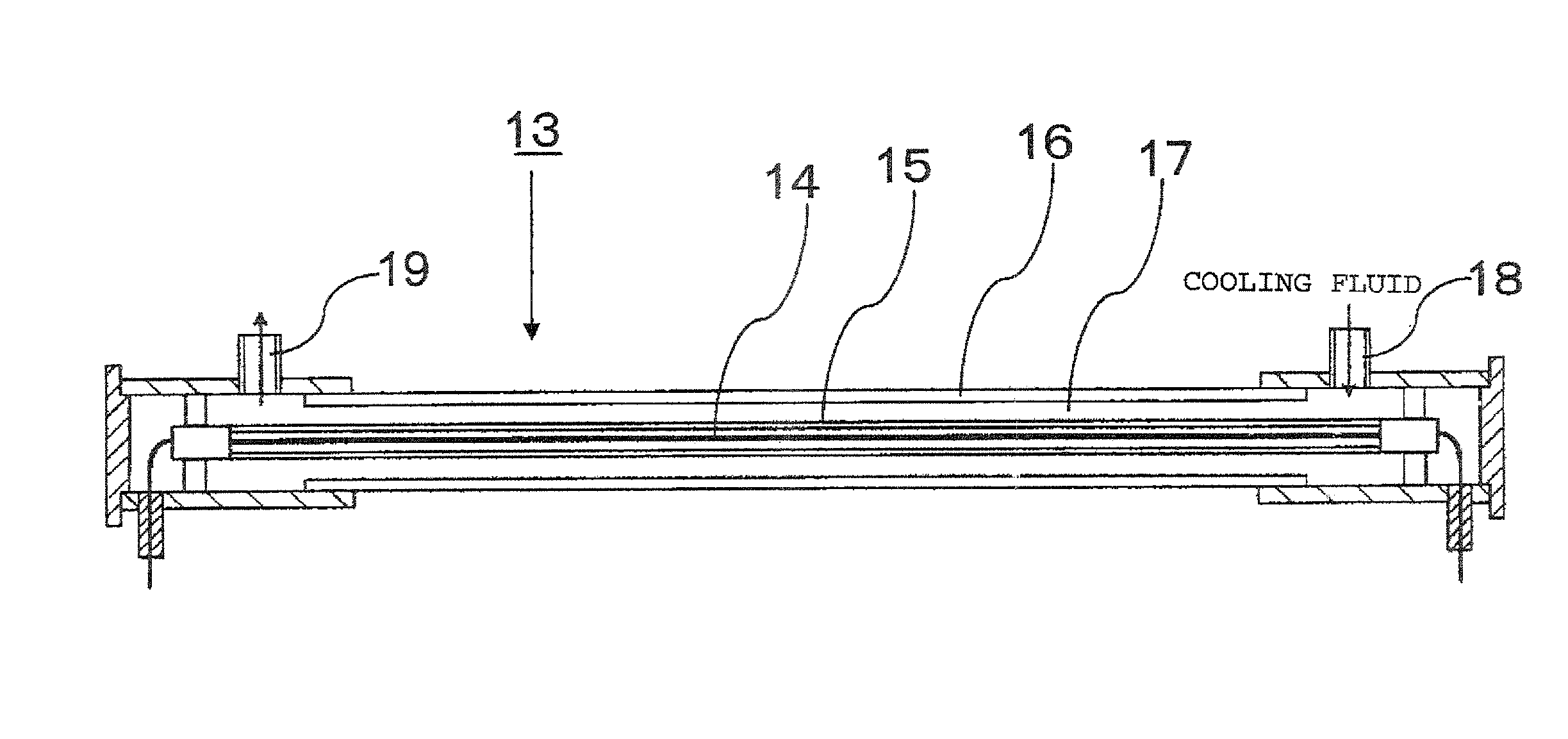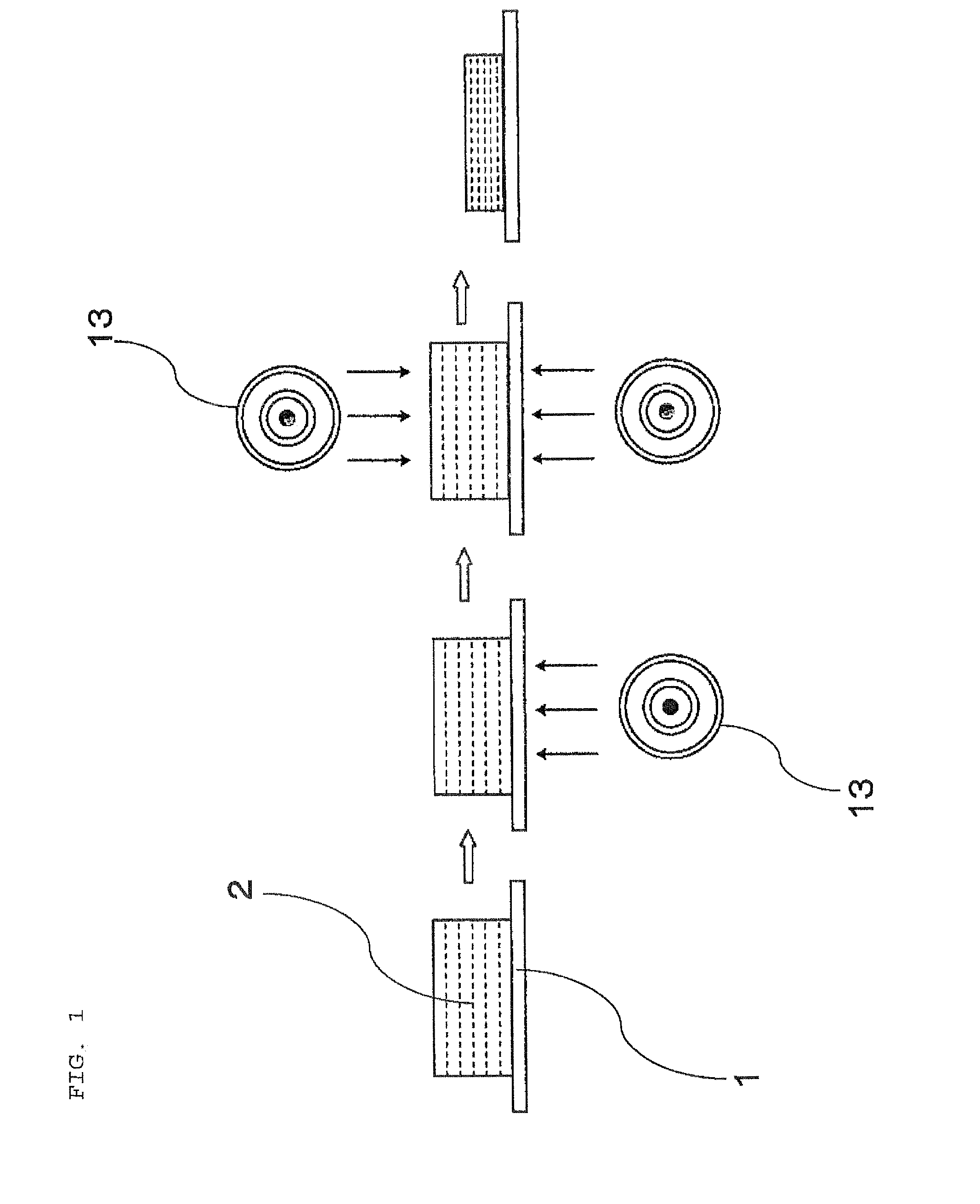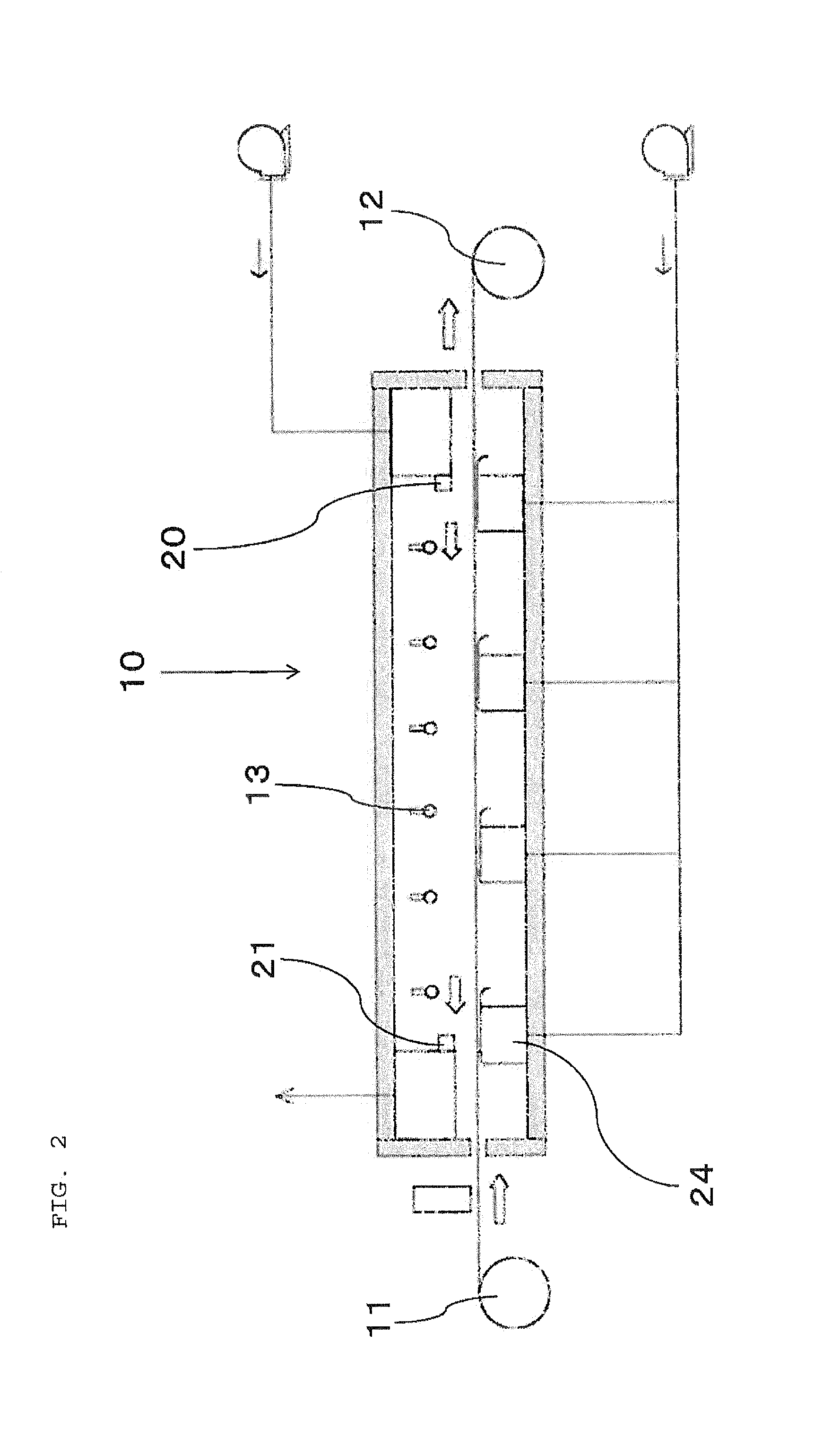Method of drying coating film formed on pet film surface and coating film drying furnace
a coating film and furnace technology, applied in the direction of furnaces, lighting and heating apparatus, manufacturing tools, etc., can solve the problems of reducing productivity and reducing dimension precision in stacking steps, and achieve the effect of preventing temperature rise of pet films, reducing temperature rise, and efficient drying in a short period of tim
- Summary
- Abstract
- Description
- Claims
- Application Information
AI Technical Summary
Benefits of technology
Problems solved by technology
Method used
Image
Examples
first embodiment
[0023]FIG. 1 is a schematic enlarged cross-sectional view of a coating film. Reference numeral 1 denotes a PET film (polyethylene terephthalate film) which is a base film, and reference numeral 2 denotes a coating film formed on the surface thereof. The coating film 2 of the present embodiment is obtained by dispersing a solute such as a barium titanate powder 3, which is one kind of a ceramic powder, together with an organic binder into an organic solvent. As the organic solvent, terpineol or the like is used. Here, it goes without saying that the kind of these ceramic powder and organic solvent can be changed in accordance with an intended product.
[0024]Generally, water or an organic solvent has an absorption spectrum of 3.5 μm or less and therefore absorbs an infrared ray having a dominant wavelength of 3.5 μm or less to be efficiently heated and evaporated, whereas a PET resin has a physical property of being hardly heated by the infrared ray having a dominant wavelength of 35 μ...
examples
[0043]The coating film drying speed was measured using an experimental furnace in which infrared heaters were disposed in the ceiling part. The base film that was put to use was a PET film having a thickness of 30 μm, and the base film having a slurry applied to a thickness of 80 μm on one surface thereof was dried. This slurry contains barium titanate, which is a ceramic powder, as a solute, and contains NMP as an organic solvent and PVDF (polyvinylidene fluoride) as an organic binder.
[0044]The temperature during the drying was measured with use of a thermocouple thermometer attached to the surface of the coating film, and the drying experiment was carried out by the following two methods under restrictions such that the coating film temperature (which is about the same temperature as the PET film temperature because the coating film is in close adhesion to the PET film) is maintained to be 40° C. or less at all times. In all of the methods, the number N of the test pieces was 2.
[0...
second embodiment
[0048]The present invention is not limited to the above-described embodiment 1 and can be applied to a film of a type having a large film thickness in which the thickness of the coating film is 100 μm to 2 mm. Hereafter, this will be described as embodiment 2. The drying furnace 10 to be used is the same as in the embodiment 1.
[0049]In the embodiment 2, the thickness of the PET film 1 is 10 to 100 μm, and the thickness of the coating film 2 is 100 μm to 2 mm in a state before drying shown on the left side of FIG. 1.
[0050]When the coating film formed on the surface of the PET film has a thickness of 100 μm or more, the temperatures of the upper and lower surfaces of the coating film may become nonuniform during the drying step, whereby a strain caused by thermal stress is liable to be generated. In contrast, in the present embodiment, the coating film is dried by first radiating an infrared ray having a dominant wavelength of 3.5 μm or less only from a back surface side of the PET fi...
PUM
| Property | Measurement | Unit |
|---|---|---|
| thickness | aaaaa | aaaaa |
| thickness | aaaaa | aaaaa |
| dominant wavelength | aaaaa | aaaaa |
Abstract
Description
Claims
Application Information
 Login to View More
Login to View More - R&D
- Intellectual Property
- Life Sciences
- Materials
- Tech Scout
- Unparalleled Data Quality
- Higher Quality Content
- 60% Fewer Hallucinations
Browse by: Latest US Patents, China's latest patents, Technical Efficacy Thesaurus, Application Domain, Technology Topic, Popular Technical Reports.
© 2025 PatSnap. All rights reserved.Legal|Privacy policy|Modern Slavery Act Transparency Statement|Sitemap|About US| Contact US: help@patsnap.com



